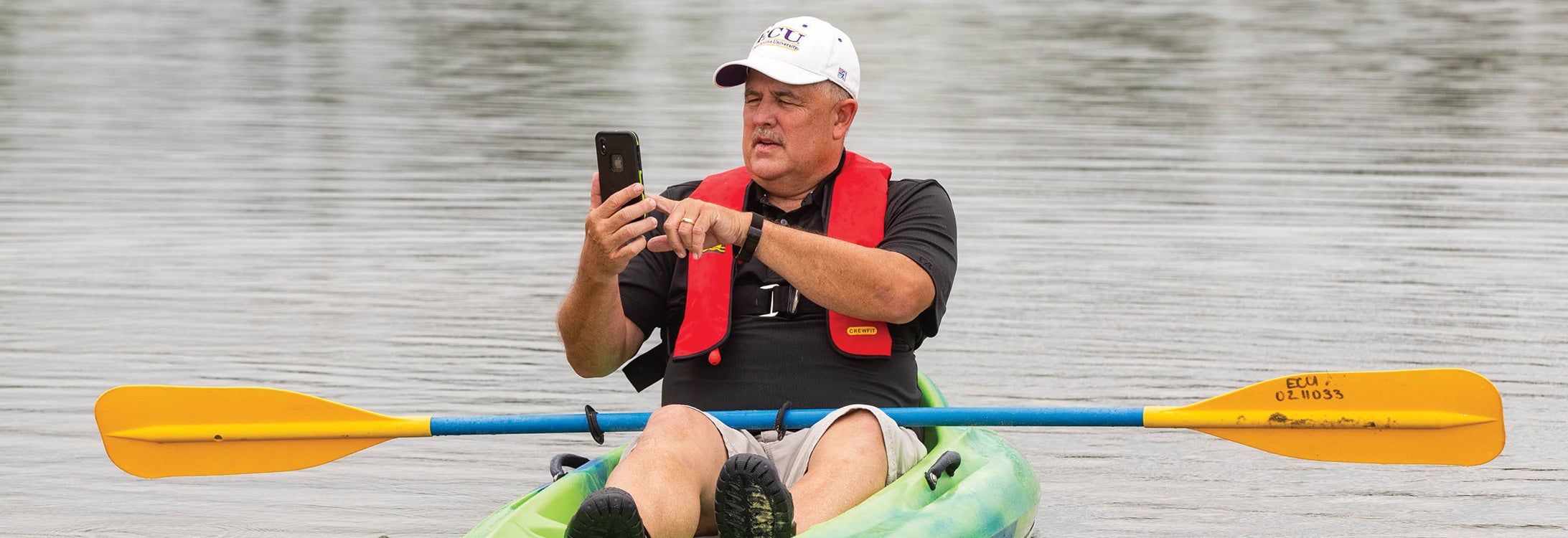Boating safety focus of ECU-designed app
A new smartphone app called SOBOS — Self reported On-water Boat Operator Survey — is aimed at changing the face of boating safety by putting data collection in the hands of boaters themselves. Future updates could, in return, provide boaters with real-time information and guidance in a way that has never been seen before.
The SOBOS app collects user-reported information about recreational boating practices and habits in order to provide more accurate data about how people use their boats.
Ernie Marshburn, a professor in the Department of Geography, Planning and Environment and director of the Center for Recreational Boating Research, said most forms of transportation have been studied heavily for the last century or more. But when it comes to research on marine transportation, there’s little literature to be found before 1980.
To add to the problem, most of the literature that is available is based on information and statistics compiled by the U.S. Coast Guard about boating accidents. It doesn’t include information about normal boating behavior for the sake of comparison.
“It’s like going into a prison and trying to understand normal behavior,” Marshburn said, in that the dataset is inherently skewed. “It seemed to me, if that’s all you’re looking at, is you’re chasing the bad actors on the water, and that’s all you’re doing.”
That accident information is important, as it helps agencies such as the Coast Guard decide where to deploy resources. But Marshburn felt the data would be more useful statistically if it could be normalized.
“To do that, all you’d have to do is collect non-accident-based boating information that’s comparable to their accident statistics, and then you compare the two,” he said. “So you’re looking at accidents and non-accidents. And that’s the basis of SOBOS.”
SOBOS takes a crowdsourcing approach to collecting information about how people use their boats. Boaters who wish to participate simply download the app, take a short survey and then use the app to track future boat trips. The app records the date and time, latitude and longitude, speed,and course heading.
“This applies to any boating community, whether it’s human-powered or engine-powered,” Marshburn said. “It’s powerboats, sailboats, kayaks, canoes and Jet Skis.”
He emphasizes participation is voluntary, and the information collected — the survey and the trip data — is anonymous.
A variety of commercial, governmental and university partners are involved in the effort, including the National Safe Boating Council, U.S. Coast Guard, U.S. Army Corps of Engineers, U.S. Power Squadrons, National Marine Manufacturers Association and U.S. Sailing. Marshburn said one important use for the new information about boat usage is for updating rules and regulations.
Once there is enough data to support it, future updates of the app could provide tools to help boaters operate more safely. Modern electronics such as chartplotters, he said, provide a lot of information but no way to determine what is and isn’t important in a given situation. The SOBOS app could include real-time reports of waterway congestion and hazards such as floating debris, or even a one-touch SOS function.
The SOBOS app is available for Android and iOS. For more information or to download, visit www.sobos.org.
